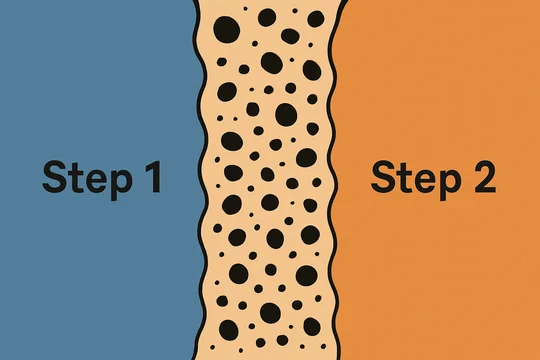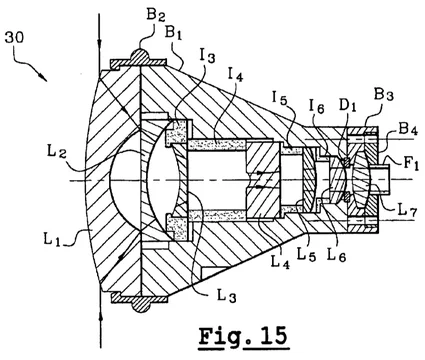
Even 10+ years after Alice, the standard for invalidity under § 101 feels inconsistent, and there is a lot of room for any two human beings (judges or otherwise) to look at the same patent and have different views. This is particularly true when you factor in the procedural hurdles, which ultimately give the Court a range of options on when to deal with a § 101 motion (e.g., before summary judgment, at summary judgment, or at trial/post trial).
So, when a D. Del. judge issues a § 101 decision, I often think it often merits a blog post—even if these are somewhat fact-specific.
Today, Chief Judge Connolly issued an opinion granting a 12(c) motion for judgment on the pleadings that a patent was invalid. See Media Content Protection LLC v. Realtek Semiconductor Corp., C.A. No. 20-1247-CFC (D. Del. Jun. 28, 2025).
The patent involved a method for securely sharing information between computers. The representative claim was relatively dense and too long to quote here, but the Court ultimately held that it was directed to the abstract idea of "authenticated content transfer" under Step 1 of Alice, and that it did not disclose an inventive concept.
Timing wise, the defendant filed its FRCP 12(c) § 101 motion about six months into fact discovery. The Court set argument for around the time of expert depositions (about 5 months after the motion was filed). On the day of the argument, after the hearing, the Court stayed the case. It issued its opinion a few weeks later.
Beyond just the basic fact that the Court granted an early-ish § 101 motion, there are a few things worth noting in the motion itself:
If You Want to Push Back on the Representative Claim, Push Back Hard
As moving parties often do, the defendant argued that one of the claims of the patents is representative. The other side pushed back, barely, and the Court held that the claim is representative:
Media Content states on the last page of its brief and without any elaboration that the patent's "dependent claims ... each add more to the ordered combination of claim elements, and therefore support eligibility." . . . This conclusory statement provides no "meaningful argument for the distinctive significance of any claim limitations not found in the representative claim," and therefore I will treat claim 1 as representative.
Id. at 3.
Oral Argument Preparation Matters
In its opinion, the Court noted that it had repeatedly asked the patentee's counsel during argument where the patent described certain elements of the claim and how they amount to an improvement on computer technology, and they were unable to. The Court discusses counsel's efforts to answer the question for several pages, and ultimately concludes that the patent merely claims a combination of conventional methods, components, and standards:
Thus, although Media Content insists that "the #564 patent's claims are directed to improving a computer's functioning," . . . it fails to identify and I do not see in the claims or the specification a sufficient explanation of "how the elements recited in the claims refer to technological features functioning together" to improve technology in a specific way. . . . To the limited extent that the patent describes the claimed apparatus and its operation, the various embodiments incorporate well-known methods, conventional computer components, and ISO standards.
Id. at 8-11.
Note that the Court's conclusion is not because counsel wasn't prepared to respond. I imagine the patent just claims conventional materials, and if so, no amount of attorney argument can change that.
But the multi-page description of back-and-forth between the Court and counsel shows just how important it is to be prepared going in. That's not something you can do cold without embarrassing yourself. It requires a pretty deep understanding of the patent, the briefs, and the arguments.
The Alice Test Is a Bit Loose
The Court discussed the two closest precedents at issue in the case, the Federal Circuit cases CosmoKey, where the patent was not ineligible, and Universal Secure, where it was. The Court noted how difficult it was to find a distinction between these two cases:
The Federal Circuit distinguished CosmoKey from Universal Secure on the basis that the asserted claims in Universal Secure "were directed to the abstract idea of combining multiple conventional, long-standing authentication techniques," and that the increased security was "no greater than the sum of the security provided by each technique alone." . . . The court held that the relevant patent in CosmoKey, by contrast, "depati[ed] from earlier approaches" in a way that was not simply cumulative. . . . I have read Universal Secure Registry and CosmoKey numerous times, but I confess that I am unable to understand how either the problem or the solution described in CosmoKey is more "specific" or "technological" than those described in Universal Secure.
The Court ultimately concluded that the patent at issue was more like Universal Secure, and thus invalid.
It also included an interesting footnote talking about the leakage between steps 1 and 2 of the Alice test:
The Federal Circuit decided CosmoKey at the second step of Alice, but the distinction between the first and second steps of the Alice analysis is porous to the extent that it is decipherable.
Id.
If you enjoyed this post, consider subscribing to receive free e-mail updates about new posts.




